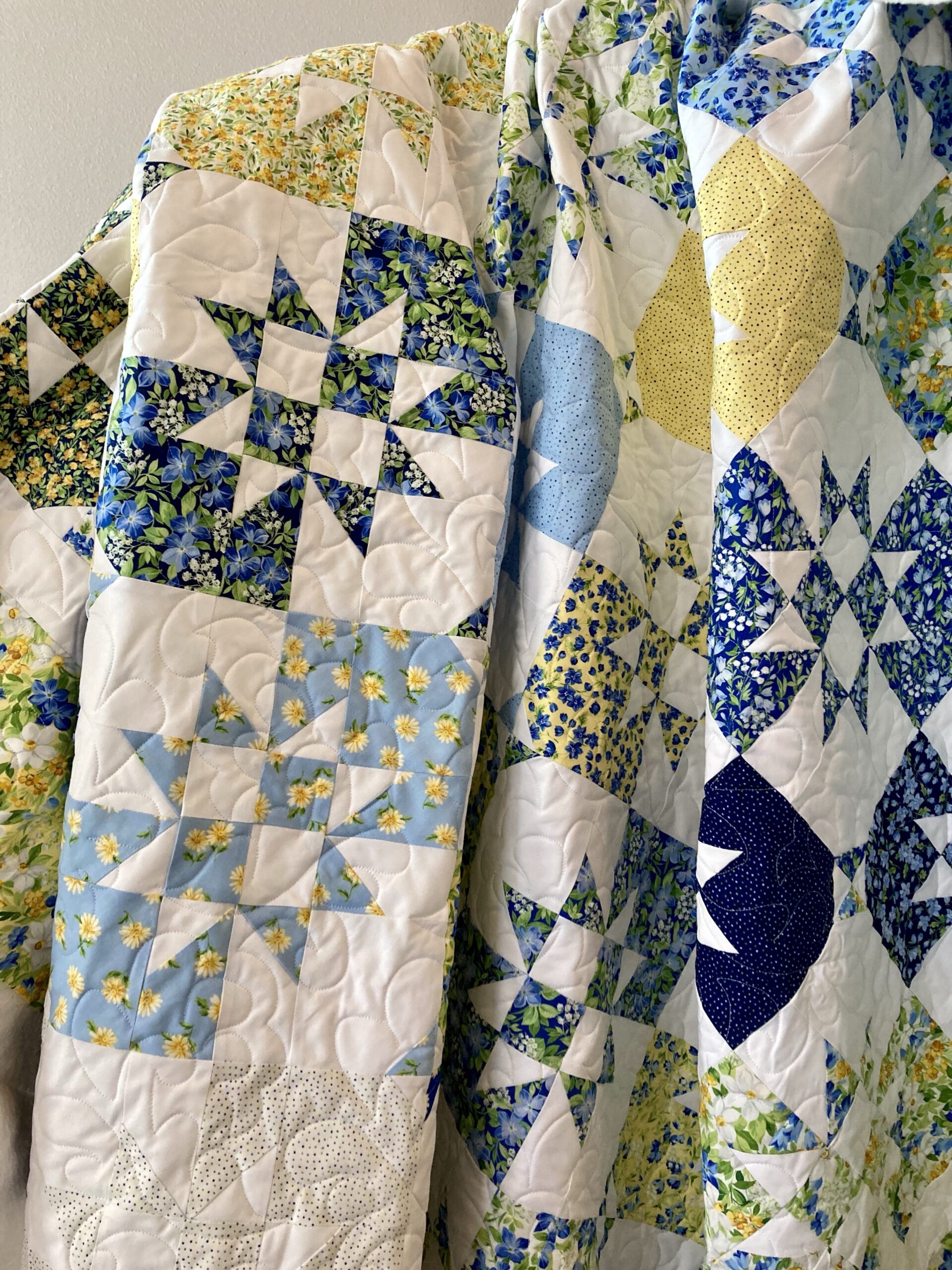For quilters, fabric is more than just material—it’s inspiration, history, and emotion woven together. A love for fabric is often what draws people into quilting in the first place, and for many, collecting fabric becomes just as joyful as stitching it into a quilt. Whether it’s the thrill of discovering a new print, the nostalgia of repurposing old textiles, or the endless possibilities that each fabric holds, quilters know that fabric isn’t just a supply—it’s the soul of their craft.
In this post, we’ll explore the deep connection quilters have with fabric, why it brings so much joy, and how to make the most of your fabric collection.
1. The Joy of Fabric Shopping
There’s something magical about walking into a quilt shop or browsing an online fabric store. The colors, the textures, the patterns—it’s a feast for the senses!
✔ A Treasure Hunt: Whether searching for the perfect shade of blue or a rare vintage print, fabric shopping feels like an adventure.
✔ Touch and Feel: Quilters love the tactile experience of feeling different fabrics—soft cottons, silky batiks, textured linens.
✔ Endless Possibilities: Each fabric holds potential, sparking ideas for future quilts and projects.
For many, buying fabric isn’t just about necessity—it’s about creativity, inspiration, and, let’s be honest, a little bit of indulgence!
2. Building a Stash: A Quilter’s Personal Collection
A fabric stash is a quilter’s treasure chest. It’s a carefully curated collection of fabrics, built over time, waiting for the perfect project. Some quilters organize their stash by color, pattern, or fabric type, while others simply enjoy the beauty of stacked fabric bundles.
✔ A Stash Tells a Story: Every fabric in a collection has a history—some were bought on vacation, gifted by a friend, or saved from a previous quilt.
✔ Creative Freedom: Having a stash allows quilters to start projects whenever inspiration strikes, without needing a trip to the store.
✔ The “Too Pretty to Cut” Syndrome: Many quilters have fabrics they adore so much they hesitate to use them—but fabric is meant to be loved and stitched into something beautiful!
For some, collecting fabric is just as much a hobby as quilting itself. The joy of having a stash isn’t just about using the fabric—it’s about the happiness it brings just by being there.
3. The Emotional Connection to Fabric
Fabric is more than just material; it’s deeply tied to emotions and memories.
✔ Memory Quilts: Quilters often use clothing from loved ones to create quilts that preserve special moments. A baby’s first onesie, a father’s favorite shirt, or a grandmother’s floral dress can all become part of a meaningful quilt.
✔ Heirloom Fabrics: Some quilters inherit fabric from family members, continuing a tradition that spans generations.
✔ Fabric as Comfort: The softness of a quilt, the familiar texture of cotton, or the weight of a heavy quilt can bring feelings of warmth and security.
Many quilters find joy in using fabric to tell a story, weaving personal meaning into each quilt they make.
4. Choosing the Right Fabric for Quilting
While all fabric is beautiful, not all fabric is ideal for quilting. Here’s what to look for when selecting fabrics for your next quilt:
✔ Cotton is King: High-quality quilting cotton is the most popular choice because it’s durable, easy to sew, and available in endless designs.
✔ Colorfast and Pre-Washed: Fabrics should be tested for color bleeding and pre-washed to prevent shrinkage.
✔ Mixing Textures: While cotton is standard, quilters also experiment with linen, flannel, and even silk for unique textures.
✔ Prints vs. Solids: A good quilt often balances bold prints with solids and blenders to create visual interest.
Finding the perfect fabric for a quilt is part of the creative process, and many quilters find this step just as rewarding as sewing itself.
5. Letting Go: Using and Loving Your Fabric
One of the biggest struggles for fabric lovers is letting go—cutting into favorite prints and actually using them in a quilt. But fabric is meant to be used and loved!
✔ Remind Yourself: You bought that fabric to create something beautiful—don’t let it sit untouched forever.
✔ Start Small: If cutting into a favorite fabric feels overwhelming, use it for a small project first.
✔ Mix Old with New: Pair a cherished fabric with new ones to give it fresh life.
✔ Make Something Meaningful: Knowing a fabric will become part of a treasured quilt makes it easier to use.
In the end, the greatest joy comes from seeing a beloved fabric stitched into a quilt that will be used, cherished, and passed down.
Final Thoughts: Fabric Is the Heart of Quilting
A love for fabric is at the core of every quilter’s journey. Whether you’re drawn to bold modern prints, timeless vintage designs, or simple solids, fabric is what brings a quilt to life. It holds memories, sparks creativity, and connects quilters across generations.
So go ahead—admire your stash, shop for that perfect print, and most importantly, use your fabric to create something beautiful.
What’s your favorite fabric in your stash? Share in the comments below!

